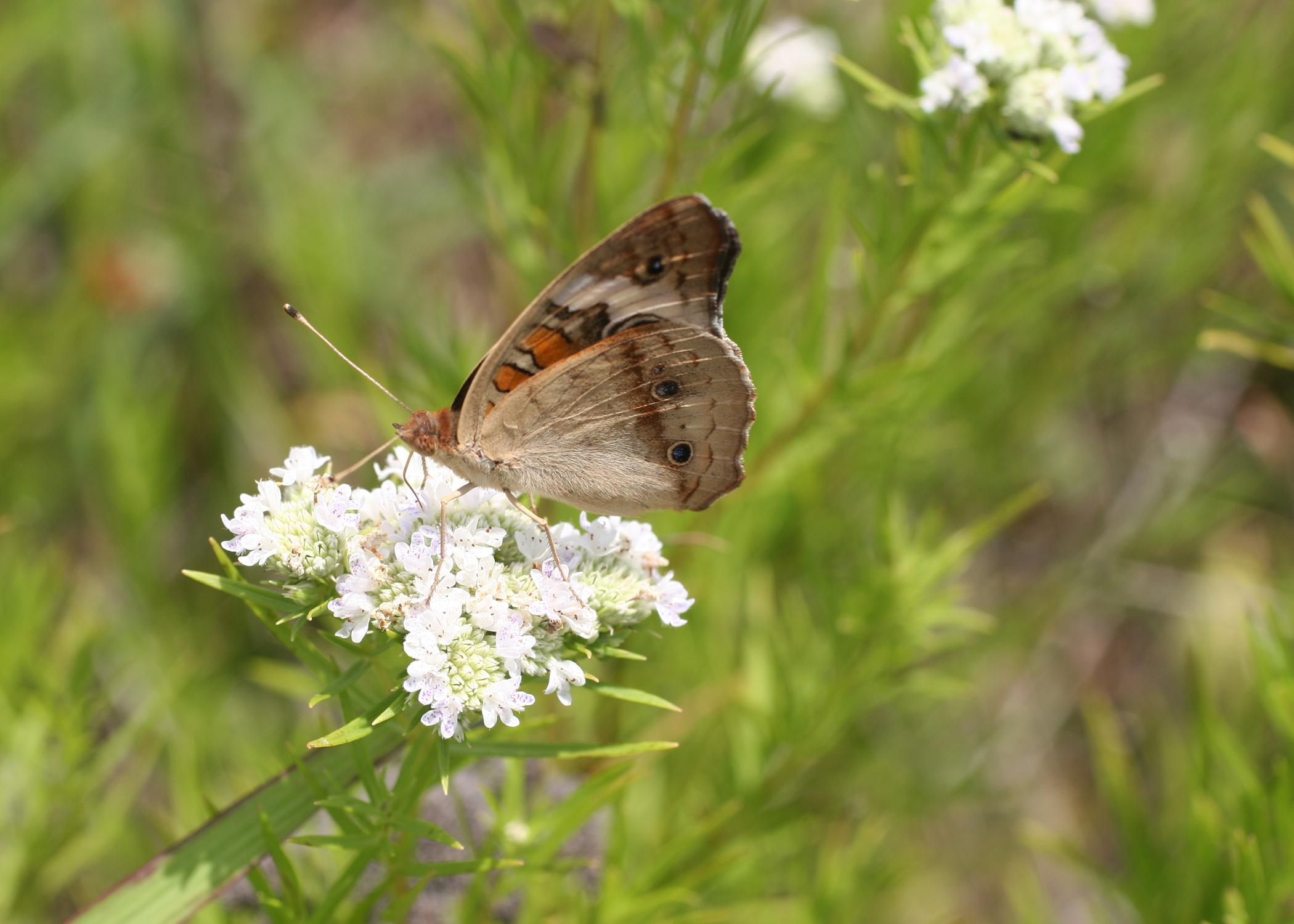Information Possibly Outdated
The information presented on this page was originally released on March 13, 2015. It may not be outdated, but please search our site for more current information. If you plan to quote or reference this information in a publication, please check with the Extension specialist or author before proceeding.
Using native plants in your yard, on your land
By Jeanne Jones, Professor, and Daryl Jones, Extension Professor
MSU Forest and Wildlife Research Center
STARKVILLE, Miss. -- Native plants can add attractive accents to Mississippians’ yards and provide excellent food sources for birds and butterflies.
Many native wildflowers, shrubs and vines produce flowers that attract hummingbirds, butterflies and sphinx moths. Native plants also provide a variety of benefits to gardening enthusiasts. For example, most native plants do not require watering, fertilization and other maintenance. Because they grow naturally in this region, they are adapted to local climate and soil conditions. So, a homeowner can enjoy beauty from native plants and save money on landscaping costs!
More than 50 species of native plants do well in Mississippi home gardens and yards. Selected types are very hardy and have showy flowers. Many of us picked these flowers when we wandered the fields and meadows as children! They include blackeyed Susan (Rudbeckia hirta); blazing stars or gayfeather (Liatris spp.); milkweeds (Asclepias spp.); native sunflowers, such as narrow leaf sunflower (Helianthus angustifolius); and wild mints, such as bee balm (Monarda spp.).
Blackeyed Susan is the earliest bloomer of this group, flowering as early as late May. The yellow flowers of this plant are beautiful when interspersed with the red and pinkish flowers of bee balms and the lavenders offered by blazing star during June through August. Milkweeds typically bloom from summer through fall, depending on the species. During late August, blooms of narrow leaf sunflower appear and continue blooming through late fall. A palette of color can occur in patches planted with these native wildflowers.
More than 20 species of butterflies and moths will be attracted to the flowers of these plants, including swallow tail, sulphur, viceroy, skipper, azure, buckeye, and monarch butterflies. In addition to adult butterflies, native plants also host the caterpillars of butterflies. For example, larvae of monarch butterflies depend on milkweeds as their primary food, and they require plants of this genus to successfully grow to adulthood. So, establishment of milkweeds in your yard can have international-level conservation contributions for these now-imperiled butterflies.
In addition to butterflies, other pollinating insects will be attracted to native wildflowers. Many of these native insects are important pollinators for our fruit trees and garden plants, such as tomatoes, squash, peppers and cantaloupes.
With attractive flowers that produce nectar, pollen and eventually seeds, you can expect songbirds to visit your native wildflower patches. Hummingbirds will visit flowers for nectar, and wrens will hunt among flowers for insects. As flowers mature to produce seeds, expect seed-eating birds, such as buntings, cardinals, grosbeaks, gold finches, chipping sparrows and juncos to visit seed heads during fall and winter months.
For more information on native plants, visit http://www.naturalresources.msstate.edu, and then click “Manage Your Land” and “Videos.”
Contact: Dr. Jeanne Jones, 662-325-2219; or Dr. Daryl Jones, 662-325-3133

Editor’s Note: Extension Outdoors is a column authored by several different experts in the Mississippi State University Extension Service.




